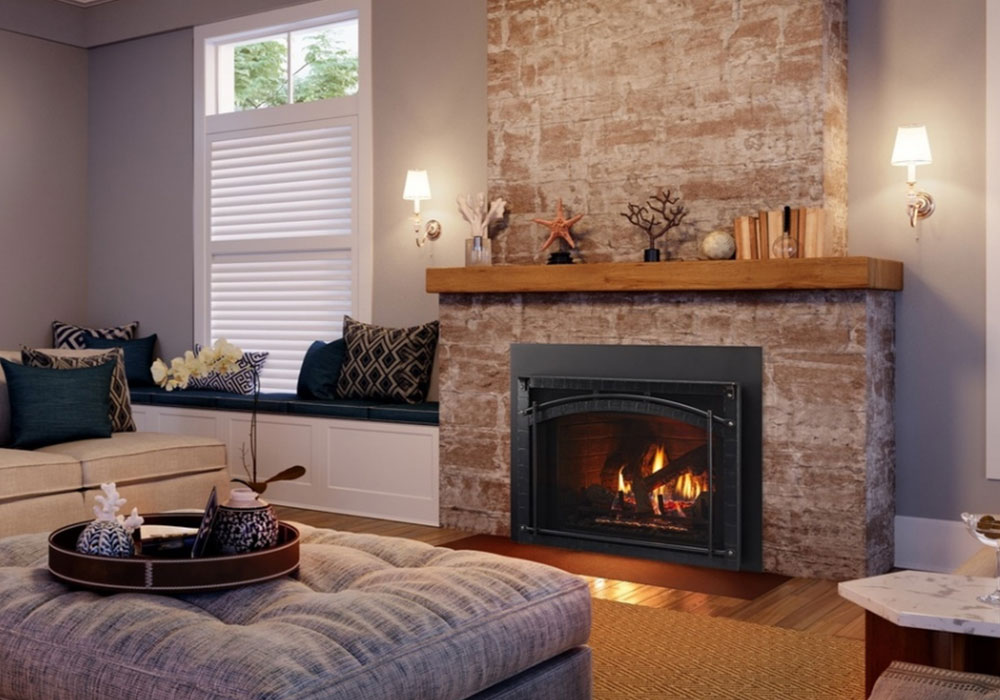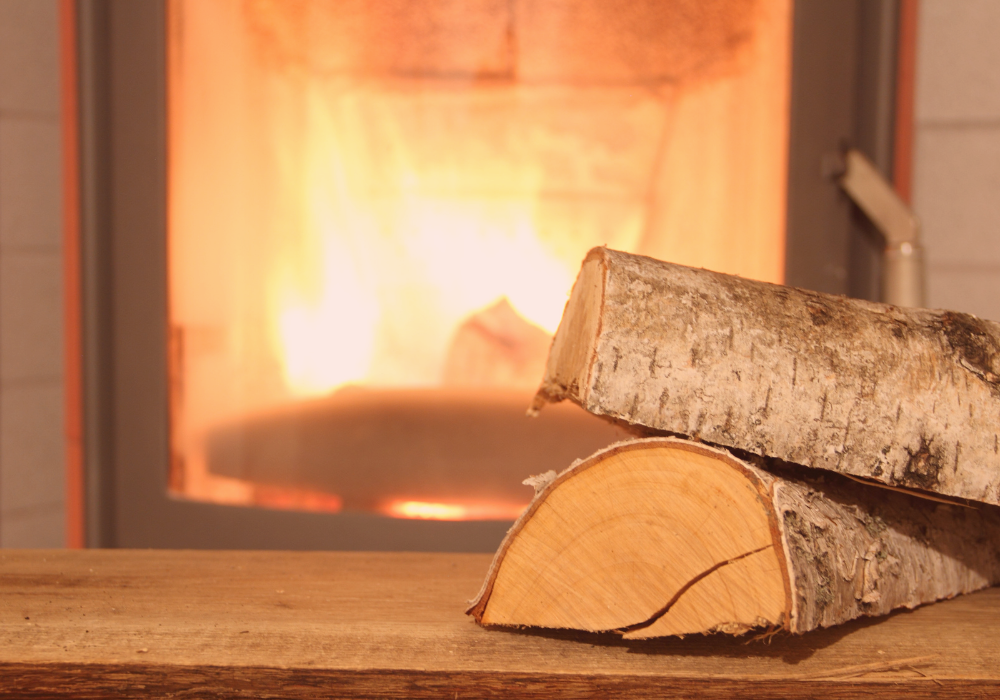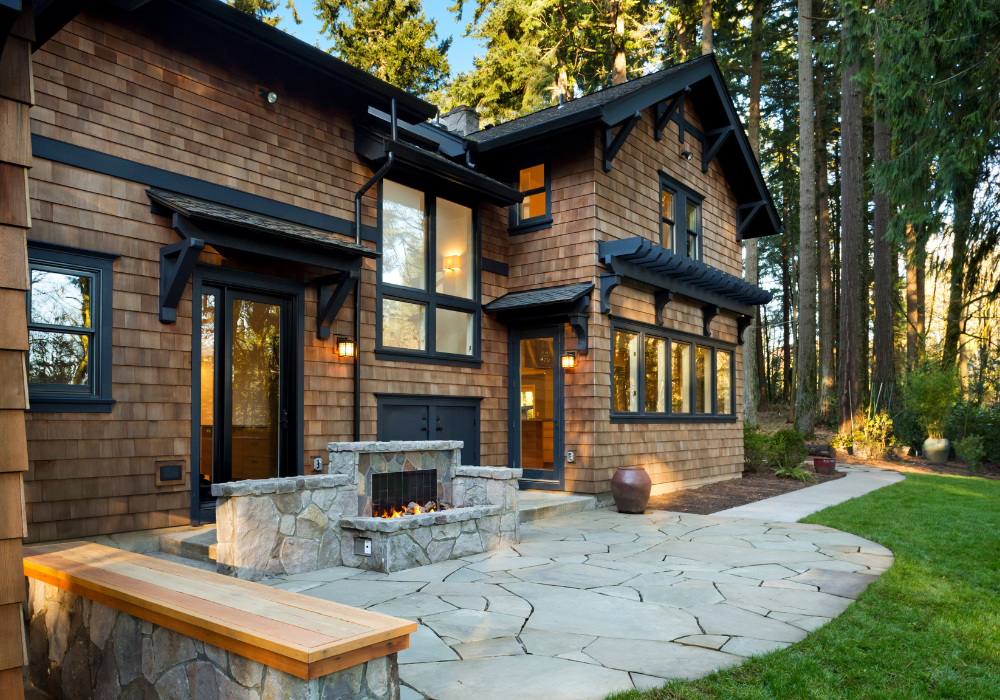The beautiful glow of a fireplace creates both heat and ambiance in your home. But it also can lead to an unsightly build-up of soot both inside and outside your fireplace. If soot is accumulating you may be wondering how to clean the inside of a fireplace–and possibly the exterior brick and glass doors as well. There’s no better time than the warmer months when your fireplace is off-duty to conduct (or hire out!) some spring cleaning of your firebox and brick.
What Causes Soot Build-Up in and on Your Fireplace
When you burn wood in your fireplace two byproducts are left behind: creosote and soot. The Chimney Safety Institute of America (CSIA) describes creosote as a “black or brown residue that can be crusty or flaky, tar-like, drippy and sticky, or shiny and hardened.” When smoke cools while exiting the house it leaves condensation behind, creating creosote.
Soot, on the other hand, is a fine dark powder left behind when wood doesn’t completely combust. Multiple factors can contribute to a soot build-up in your firebox or on your brick:
Gas Fireplaces: clogged burner ports and improperly positioned logs causing improper airflow
Wood-burning Fireplaces: using unseasoned wood or trash as fuel; lower temperature fires
Fireplace Maintenance: How to Clean Your Firebox
While the finished product is worth it, we’re not going to pretend this isn’t a dirty DIY job. We want to make sure you know what you’re in for before giving it a go. Here are the basic steps a homeowner can take to clean the inside of a fireplace:
- Once your firebox is completely cool, place a drop cloth or protective barrier on the flooring around your fireplace. Ready a container for debris.
- Dispose of any wood and remove the grate.
- Use a fireplace shovel, broom, and dustpan to remove the ashes from the firebox. (Before you throw them out, check out these ways to reuse ashes around your home and garden.)
- If you have a shop vacuum, use it to capture the remaining ash.
How to Remove Soot From Brick
Now let’s tackle the interior and exterior brick. Here are two cleaning solutions made from household products:
- Equal parts vinegar and warm water. (Note: this solution can be harsh on older brick.)
- Mix ¼ cup of clear, grease-cutting dish detergent in four cups of water.
If your soot stains are stubborn, you may need to reapply them or deploy a stronger cleaning agent such as borax or a formula of ⅛ cup trisodium phosphate (TSP) with one gallon of hot water. Make sure you have adequate ventilation and wear eye protection. Start with an inconspicuous place like inside your firebox in case it is harsh on the bricks.
- Apply your cleaning mixture with a spray bottle if you’re using something mild like vinegar or dish soap, or with a sponge if you’re using something harsher.
- Using a plastic scrub brush, apply a circulation motion top to bottom (so you don’t streak the areas you’ve already cleaned.)
- Rinse off the areas you’ve cleaned with fresh water on a sponge.
Don’t Forget to Clean Your Fireplace Doors
We recommend removing your glass fireplace doors, if possible, and taking them outside or to the garage to clean to protect your home’s furnishings.
There are commercial cleaning products available or you can use something gentler like vinegar diluted with water on a microfiber cloth. Fun fact: you can make a paste of water and ash from your fireplace and buff it onto the glass to remove the soot.
The Best Way to Clean a Fireplace? Call a Professional!
Not only is soot on your brick fireplace an eyesore but debris buildup presents a fire hazard. Sure, you can try to do it yourself, but at the end of the day, the best way to clean a fireplace is to hire a professional.
A professional chimney sweep has the tools and experience to complete this for you and spring is an ideal time if your fireplace is on-hiatus. AES Hearth and Patio provides chimney cleaning services including maintenance and repair. Contact us to get a free estimate regarding chimney sweeping, chimney repair work, chimney cap replacement, chimney waterproofing, and more!




